Dead Cells is a perfect example of Early Access done right
The indie 'roguevania' evolved a lot in Early Access, and is a better game for it.
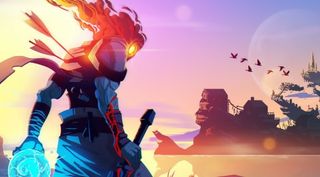
The hero of Dead Cells is a living head on a reanimated body, or rather a series of reanimated bodies, each slightly more likely to succeed than the last. It's an apt metaphor for the game itself, which changed again and again even before going into Early Access. In its early days it was in a completely different genre, and somewhere in an alternate leg of the trousers of time there's a version of Dead Cells that remained a free-to-play zombie-themed tower defense game for browsers and phones.
Developers Motion Twin had previously made a browser game called Die2Nite, where 40 players work together to defend a town from the undead. Their plan for a follow-up was a game that let players not just build traps and defenses, but then position their characters as well so they had something to do during the attack phase. The concept was sound, but it didn't go much further than the prototype stage. Producer Steve Filby explains.
"The idea sounded pretty cool on paper and everything but once we started building it we realized that it wasn't particularly fun. It was OK for us when we were all playing online together in the office because we were here yelling at each other, 'Go over here!' But we very quickly realized with some playtests with the community that they just weren't enjoying it. It was no fun when you're by yourself."
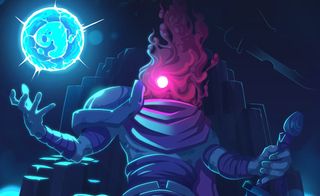
In 2014 they took a single-player version of that game to an event called the Big Indie Pitch, a competition where indie developers have three minutes to sell their idea to a team of judges, and came second. That was all the motivation their lead designer needed to begin hacking away at Dead Cells, removing all the multiplayer elements and the free-to-play cruft, while their graphic artist suggested going even further and getting rid of the tower defense as well.
"We had two parts of the game," says Filby. "The preparation part, which was slow and contemplative, and the actual action part. So we got rid of all the contemplative part and kept the action part. That's the moment, the rest is history, but that period that probably took from the end of 2014 to about the end of 2015. A good year of fartarsing around before we actually said, all right, let's build an action-platformer."
The road to Early Access and through Early Access is littered with the bodies of failed games
Steve Filby
It took another year to get from there to the point where they felt ready to release in Early Access. Although Filby estimates the version of Dead Cells they put on Steam back in May 2017 was only about 30 to 40 percent finished, they wanted to make sure it felt tight even then—that moving and fighting was enjoyable even if the rest of the game was incomplete.
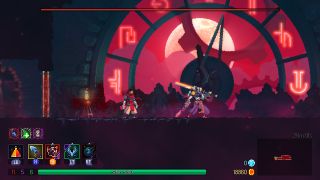
"The road to Early Access and through Early Access is littered with the bodies of failed games and failed developers who have then been smashed and blacklisted for their poor practices during development and so I was like, if we're going to do this we have to have something super solid, super polished, and super satisfying to play. We have to have that core gameplay, that core vertical slice."
The biggest gaming news, reviews and hardware deals
Keep up to date with the most important stories and the best deals, as picked by the PC Gamer team.
With that in place, they began the process of iterating and expanding on their design. They expected it to be a roughly year-long process at the most, and it ended up being closer to 15 months—not too far off, given how these things usually go. Of the changes that happened to Dead Cells during that time, and there were many, a significant number were inspired by player feedback.
"If you go back and look through the Reddit for the first three to six months after the Early Access, there's some threads in there where guys are writing full essays, three-to-five thousand word essays on what they think, and debating amongst themselves—cordial discussion—and coming up with useful ideas. While we don't go, 'oh, this is amazing, we're just going to do what this guy says' it definitely helps."
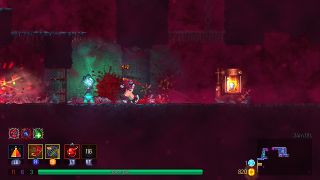
The main value of player feedback was in identifying problems. A common thing to hear from developers is that it's worth listening to players when they say there's an issue, but not so much when they're suggesting solutions. So when Dead Cells players said the game balance felt off, lead designer Sébastien Bénard listened, then reworked it entirely. The effects of that were felt everywhere.
"It touches every aspect of the game," says Filby. "The balancing of the stats and the way that you think about powering up items through those stats is fundamental to the core of the game. That was one of the things that—we definitely didn't plan it—came along and it was a big job that took a long time. The Brutal Update was the major update where we pushed that out and then it took I think another major update before we finished the system by adding the Forge, and then another update of balancing and dealing with the fallout of the changes."
I think Early Access is an incredible tool for building better games because it does allow you to collaborate with the community
Steve Filby
The Forge is an interesting one. Its initial version let you buy upgrades for specific gear, which had the unintended consequence of encouraging people to stick with weapons they'd paid to upgrade. "Some of the feedback we got was from a dude on Twitter called Celestalon, who just so happens to be one of the lead designers on Hearthstone," Filby says. Celestalon pointed out that the Forge made players feel locked into builds, taking away the fun of experimentation. "[It] took away the fun of learning to play with items and playstyles that you probably wouldn't use. I sent that to Seb via Twitter and he sent something back via Slack saying, 'Aw, the bugger! I know he's right too so now I'm going to have do something about it.'"
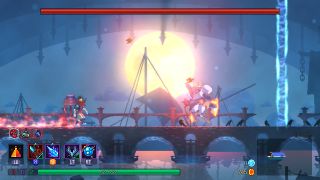
One bit of feedback suggesting a feature rather than pointing out a problem did make its way into the finished game: elemental damage. People said they thought it would be cool to be able to electrocute enemies or set them on fire, and now you can. It's a relatively small addition but a fun one, a grace note on their symphony, or maybe a layer of sprinkles on their cake.
As for whether Motion Twin repeat this process for their next game, Filby says it's a matter of what kind of game they end up making. "There's a lot of guys in the team who wouldn't mind trying something a little bit more static, a bit more narrative and stuff like that, in which case it makes no sense to use Early Access. Personally I think Early Access is an incredible tool for building better games because it does allow you to collaborate with the community in the way that we have, and it does force you to really critically think about the game design decisions that you have made."

Jody's first computer was a Commodore 64, so he remembers having to use a code wheel to play Pool of Radiance. A former music journalist who interviewed everyone from Giorgio Moroder to Trent Reznor, Jody also co-hosted Australia's first radio show about videogames, Zed Games. He's written for Rock Paper Shotgun, The Big Issue, GamesRadar, Zam, Glixel, Five Out of Ten Magazine, and Playboy.com, whose cheques with the bunny logo made for fun conversations at the bank. Jody's first article for PC Gamer was about the audio of Alien Isolation, published in 2015, and since then he's written about why Silent Hill belongs on PC, why Recettear: An Item Shop's Tale is the best fantasy shopkeeper tycoon game, and how weird Lost Ark can get. Jody edited PC Gamer Indie from 2017 to 2018, and he eventually lived up to his promise to play every Warhammer videogame.
Most Popular

